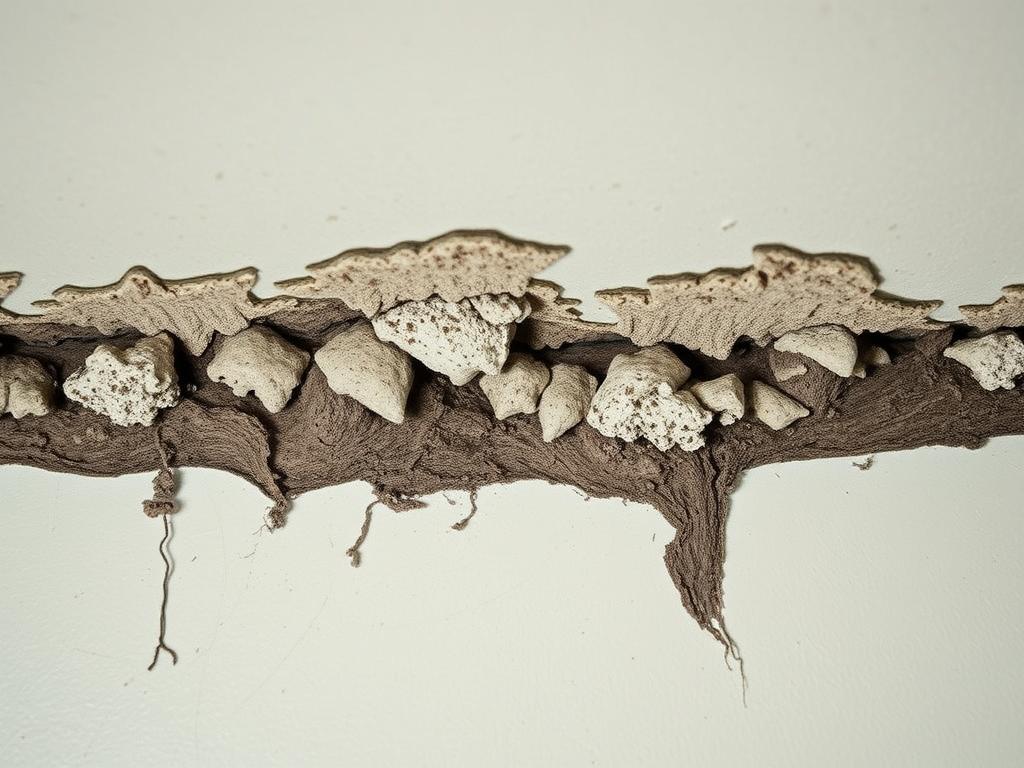¿Qué es el moho y por qué es tan común en Puerto Rico?

Living in Puerto Rico means enjoying beautiful beaches, lush green landscapes, and warm tropical weather. However, the island’s humid climate also creates the perfect environment for a hidden threat lurking in many homes and buildings: moho, or mold. Moho en Puerto Rico thrives because of the high moisture levels throughout the year. This microscopic fungus grows on damp surfaces, walls, ceilings, and even inside air conditioning units, making it a common problem that residents face. While it might seem harmless at first glance, moho can play a significant role in worsening respiratory conditions, especially asthma.
Mold spores float freely in the air and can easily enter your home or office through open windows, doors, or ventilation systems. When these spores settle on wet or damp surfaces, they multiply rapidly, creating visible patches that range from black and green to white or even pinkish hues. But it’s not just the sight of mold that matters; the real danger lies in the air you breathe.
Why moho is a serious concern for people with asthma
Asthma affects thousands of Puerto Ricans, and unfortunately, moho can trigger asthma attacks or make symptoms worse. When inhaling mold spores, the immune system reacts to these foreign invaders, causing inflammation in the airways. For asthma sufferers, this means increased coughing, wheezing, shortness of breath, and even severe attacks that require emergency care.
The connection between moho and asthma is backed by scientific studies. According to the Centers for Disease Control and Prevention (CDC), exposure to mold can cause asthma symptoms or worsen them in people who already have the condition. In humid areas like Puerto Rico, where moho growth is rampant due to constant moisture, the risk becomes much higher.
Common sources of moho in Puerto Rico homes
Understanding where moho hides in our living spaces is crucial for effective prevention and control. In Puerto Rico, some common sources include:
- Leaky roofs and walls caused by heavy rains
- Poor ventilation in bathrooms and kitchens
- Air conditioning units and ducts that accumulate moisture
- Flooded areas or homes near bodies of water
- Condensation on windows, pipes, and walls due to temperature differences
These sources create the perfect environment for mold growth. For example, a leaking roof after a tropical storm can allow water to seep into walls, fostering moho growth inside your home without you even realizing it.
Mold growth timeline and symptoms in the home
Mold can begin growing within 24 to 48 hours after water intrusion occurs. It often starts as a small discoloration, which grows bigger and spreads if the moisture problem is not addressed. Visible mold patches may take days or weeks to appear, but the spores begin affecting indoor air quality much sooner.
Here is a simple timeline illustrating typical mold growth stages inside a home:
| Time Since Moisture Exposure | Mold Activity | Visible Signs | Impact on Indoor Air Quality |
|---|---|---|---|
| 0-24 hours | Water penetration, damp surfaces | No visible mold yet | Low spore release, minimal impact |
| 24-48 hours | Mold spores begin to germinate and colonize | Possible musty odor | Increasing spore concentration |
| 3-7 days | Mold establishes, patches visible on walls/surfaces | Visible discoloration and odor | High spore release, risk to respiratory health |
| 1+ weeks | Mold colonies expand, damage surface materials | Large visible patches, strong odor | Very high spore concentration, serious health risks |
How moho affects asthma patients in Puerto Rico
For individuals with asthma, breathing in mold spores can trigger various respiratory issues. In Puerto Rico, where asthma prevalence is notably high, moho exposure adds to the burden many patients face. The impact can be subtle or severe, often depending on individual sensitivity and exposure levels.
Here are some ways moho worsens asthma symptoms:
- Increased airways inflammation: Mold spores stimulate the immune system, causing swelling and narrowing of the airways.
- Heightened allergic response: Many people with asthma also have mold allergies, which further aggravates breathing difficulties.
- Frequent asthma attacks: Exposure may lead to more frequent or intense attacks, especially in children and the elderly.
- Reduced lung function: Prolonged exposure can decrease lung capacity and endurance over time.
In areas with poor housing conditions or limited ventilation, moho exposure creates an ongoing health risk. Children with asthma, in particular, are vulnerable since their developing lungs and immune systems react more strongly to allergens and irritants.
Statistics on asthma and mold in Puerto Rico
Puerto Rico’s humid climate combined with economic challenges makes dealing with moho especially difficult for many families. According to the Puerto Rico Department of Health, asthma affects approximately 12% of children and over 9% of adults on the island. Studies also indicate:
- Up to 50% of households tested in some areas show mold contamination inside the home.
- Asthma-related emergency department visits and hospitalizations spike after heavy rains and hurricanes, often linked to mold outbreaks.
- Low-income communities, where housing is frequently substandard, are disproportionately affected.
These facts highlight the critical importance of addressing moho to reduce asthma complications in Puerto Rico.
Preventing and controlling moho in Puerto Rico homes

The good news is that with the right knowledge and effort, moho can be managed and its impact on asthma minimized. Prevention starts by controlling moisture, as mold cannot grow without water.
Here are some practical tips to reduce mold risk in your home:
- Fix leaks promptly in roofs, walls, and plumbing to prevent moisture buildup.
- Increase ventilation by using exhaust fans in bathrooms and kitchens.
- Use a dehumidifier to maintain indoor humidity below 50%.
- Clean and maintain air conditioning units regularly to avoid mold accumulation.
- Remove and replace water-damaged materials like drywall and carpets.
- Keep gutters clean to prevent water intrusion around your home’s foundation.
- Use mold-resistant products, especially during repairs or construction.
Early detection techniques
Regular inspections for mold signs are essential in Puerto Rico’s moist environment. Look for:
- Musty odors even when mold isn’t visible
- Water stains or discoloration on walls and ceilings
- Condensation on windows, pipes, or walls
- Visible mold patches behind furniture or appliances
Using mold testing kits or hiring professionals can provide more accurate assessments if you suspect hidden mold.
How to help asthma patients cope with moho exposure
Managing asthma while living in a moho-prone environment can be challenging, but there are ways to reduce the impact. Asthma patients and their caregivers should consider:
- Regular medical check-ups and asthma action plans customized to the individual’s sensitivity to mold.
- Using air purifiers with HEPA filters to reduce airborne mold spores indoors.
- Wearing masks during mold remediation activities or when cleaning damp areas.
- Ensuring that medicines like inhalers and corticosteroids are easily accessible and used as prescribed.
- Educating family members and neighbors about mold’s dangers and prevention.
By combining medical care and environmental control, asthma patients can significantly improve their quality of life, even in mold-prone climates like Puerto Rico.
The role of community and public health initiatives
To combat the widespread problem of moho and its health effects, community engagement and public health efforts play a vital role. Strategies include:
- Educational campaigns to raise awareness about mold prevention and asthma management.
- Government programs providing resources for home repairs and mold remediation, targeting vulnerable populations.
- Regulations encouraging landlords to maintain safe and dry housing conditions.
- Research funding focused on understanding mold-related asthma triggers specific to Puerto Rico’s climate.
Puerto Rico has seen positive steps in these areas, yet challenges remain, especially after natural disasters like hurricanes that increase risk factors for moho growth. Continued collaboration among health agencies, community organizations, and residents is necessary to reduce mold-related asthma complications.
Remediation and professional mold removal in Puerto Rico
Sometimes, moho problems require professional intervention, especially when mold covers large areas or affects structural components. Mold remediation specialists assess the problem, contain affected areas, remove contaminated materials, and apply treatments to prevent regrowth.
When hiring professionals, consider the following:
| Important Factors | Description |
|---|---|
| Certification and experience | Look for licensed companies with expertise in humid tropical climates like Puerto Rico |
| Assessment techniques | Use of moisture meters, air quality testing, and visual inspection to identify mold sources |
| Remediation process | Safe containment of mold spores during cleanup to protect residents |
| Post-remediation verification | Ensure mold levels are reduced and the environment is safe before reoccupation |
Professional remediation can be costly but is sometimes necessary to protect health, especially for vulnerable asthma patients.
Conclusion
Moho en Puerto Rico is much more than an unsightly nuisance—it is a silent enemy especially dangerous for people with asthma. The island’s humid climate creates a perfect storm for mold growth, which can worsen respiratory symptoms and provoke serious asthma attacks. Understanding moho’s sources, early signs, and impact on health is crucial for residents to protect themselves and their families. Thankfully, with proper moisture control, regular maintenance, and awareness, mold can be managed effectively. For asthma patients, combining medical treatment with environmental measures offers the best defense against mold-triggered symptoms. Community initiatives and professional support also play important roles in making Puerto Rican homes safer and healthier. By addressing moho head-on, Puerto Rico can reduce asthma complications and improve quality of life for thousands of people across the island.
